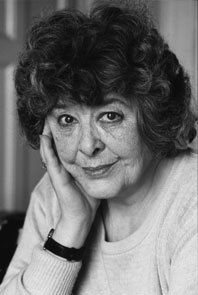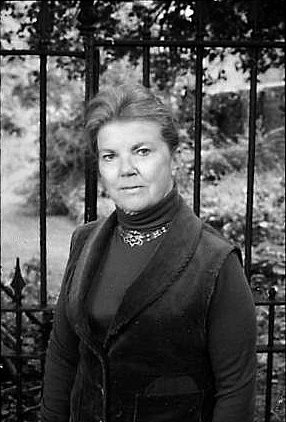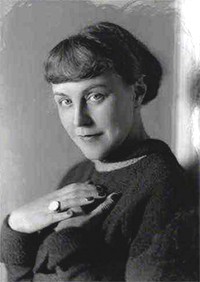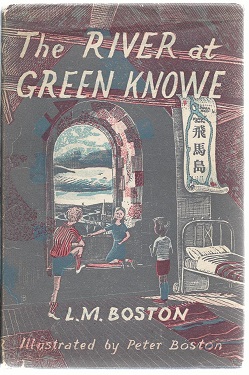
Diana Wynne Jones was a British novelist, poet, academic, literary critic, and short story writer. She principally wrote fantasy and speculative fiction novels for children and young adults. Although usually described as fantasy, some of her work also incorporates science fiction themes and elements of realism. Jones's work often explores themes of time travel and parallel or multiple universes. Some of her better-known works are the Chrestomanci series, the Dalemark series, the three Moving Castle novels, Dark Lord of Derkholm, and The Tough Guide to Fantasyland.

Edward Frederic Benson was an English novelist, biographer, memoirist, historian and short story writer.
This article contains information about the literary events and publications of 1954.

Rosemary Sutcliff was an English novelist best known for children's books, especially historical fiction and retellings of myths and legends. Although she was primarily a children's author, some of her novels were specifically written for adults. In a 1986 interview she said, "I would claim that my books are for children of all ages, from nine to ninety."

Joan Delano Aiken was an English writer specialising in supernatural fiction and children's alternative history novels. In 1999 she was awarded an MBE for her services to children's literature. For The Whispering Mountain, published by Jonathan Cape in 1968, she won the Guardian Children's Fiction Prize, a book award judged by a panel of British children's writers, and she was a commended runner-up for the Carnegie Medal from the Library Association, recognising the year's best children's book by a British writer. She won an Edgar Allan Poe Award (1972) for Night Fall.
Peter Malcolm de Brissac Dickinson OBE FRSL was an English author and poet, best known for children's books and detective stories.
Ann Philippa Pearce OBE FRSL was an English author of children's books. Best known of them is the time-slip novel Tom's Midnight Garden, which won the 1958 Carnegie Medal from the Library Association, as the year's outstanding children's book by a British subject. Pearce was a commended runner-up for the Medal a further four times.
Brett L. Helquist is an American illustrator best known for his work in the children's book series A Series of Unfortunate Events. As such, his illustrations for that series have appeared in multiple media, including the books, the audio book covers, and the calendars. Helquist graduated from Brigham Young University (BYU) with a BFA in illustration in 1993. After graduation, he moved to New York City where he worked full-time as a graphic designer, occasionally drawing for newspapers and magazines. Helquist's work has been featured in children's magazines, along with The New York Times. He has illustrated almost 50 books.

Hemingford Grey is a village and civil parish in Cambridgeshire, England. Hemingford Grey lies approximately 4 miles (6 km) east of Huntingdon. Hemingford Grey is situated within Huntingdonshire which is a non-metropolitan district of Cambridgeshire as well as being a historic county of England.

The Manor is a house in the village of Hemingford Grey, Cambridgeshire. It was built in the 1130s and is one of the oldest continuously inhabited houses in Britain — often claimed as the oldest, although this is disputed. Much of the original house remains intact despite various changes over nine centuries.
Lucy Maria Boston was an English novelist who wrote for children and adults, publishing her work entirely after the age of 60. She is best known for her "Green Knowe" series: six low fantasy children's novels published by Faber between 1954 and 1976. The setting is Green Knowe, an old country manor house based on Boston's Cambridgeshire home at Hemingford Grey. For the fourth book in the series, A Stranger at Green Knowe (1961), she won the annual Carnegie Medal from the Library Association, recognising the year's best children's book by a British subject.

Gillian Honorine Mary Herbert, Baroness Hemingford,, known professionally as Jill Paton Walsh, was an English novelist and children's writer. She may be known best for her Booker Prize-nominated novel Knowledge of Angels and for the Peter Wimsey–Harriet Vane mysteries that continued the work of Dorothy L. Sayers.

Mary Noel Streatfeild OBE was an English author, best known for children's books including the "Shoes" books, which were not a series. Random House, the U.S. publisher of the 1936 novel Ballet Shoes (1936), published some of Streatfeild's subsequent children's books using the word "Shoes" in their titles, to capitalize on the popularity of Ballet Shoes; thus Circus Shoes, Party Shoes, Skating Shoes and many more. She won the third annual Carnegie Medal for The Circus Is Coming. She was a member of the historic Streatfeild family.

Kathleen Mary Norton, known professionally as Mary Norton, was an English writer of children's books. She is best known for The Borrowers series of low fantasy novels, which is named after its first book and, in turn, the tiny people who live secretly in the midst of contemporary human civilisation.
Polly Maberly is an English actress, known for portraying the role of Kitty Bennet in the BBC's 1995 adaptation of Pride and Prejudice. She is the older sister of actress Kate Maberly.
Daphne Margaret du Grivel Oxenford was an English actress, known for her early stage roles, and later her radio and television work. She was the voice of BBC radio's Listen with Mother from its inception in 1950 to 1971. As spinster Esther Hayes, she was part of the original cast of Coronation Street. Other notable roles include Mrs Plummer in Man About the House (1973), Alice Dutton in EastEnders (1990), and Mrs. Oldknow in the mini-series The Children of Green Knowe (1986).
Lynnette, also spelled Lynette, is a feminine given name.

From Time to Time is a 2009 British fantasy drama film directed by Julian Fellowes starring Maggie Smith, Timothy Spall, Carice van Houten, Alex Etel, Eliza Bennett, Elisabeth Dermot-Walsh, Dominic West, Hugh Bonneville, and Pauline Collins. It was adapted from Lucy M. Boston's children's novel The Chimneys of Green Knowe (1958). The film was shot in Athelhampton Hall, Dorset.

The River at Green Knowe is a children's novel written by Lucy M. Boston, first published in 1959. It is part of the Green Knowe series, and is the third published in the sequence.
Peter Shakerley Boston was a British architect and illustrator, best known for the illustrations he made to the books written by his mother, author Lucy M. Boston (1892–1990), who wrote under the name L.M. Boston. The best known of these books were the Green Knowe books. In those illustrations, Peter Boston included items from his mother's home, The Manor in Hemingford Grey, Cambridgeshire, one of the oldest continuously inhabited houses in Britain.











